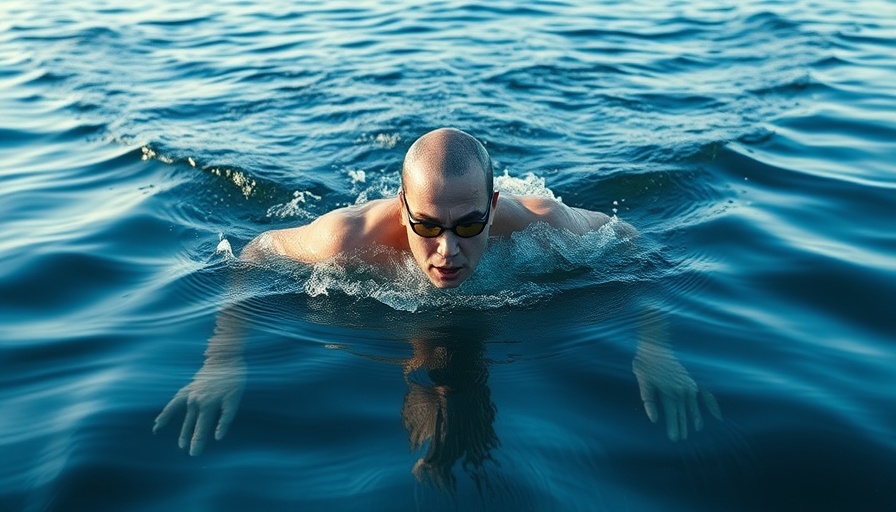
Unlocking the Secrets of Cold-Water Immersion
Historically, people have turned to cold-water immersion for recovery and health. This practice, which dates back to ancient Egypt and has been embraced in Nordic cultures for centuries, is gaining traction among athletes and fitness enthusiasts today. Finnish athletes utilize a specific method known as avantouinti, where they take plunges into holes cut into frozen lakes, followed by sessions in a hot sauna. This combination not only enhances physical recovery but also supports mental well-being, making it popular in professional and amateur sports alike.
The Science Behind Cold Therapy for Recovery
Cold-water immersion functions by inducing vasoconstriction when submerged. This temporary reduction in blood flow helps minimize inflammation and provides rapid recovery for sore muscles. Interestingly, once athletes exit the cold water, the blood vessels dilate, leading to vasodilation, which improves circulation and flushes metabolic wastes like lactic acid from the muscles. This mechanism is enhanced further by the endorphins released during cold exposure, leading to increased feelings of well-being, vitality, and resilience—attributes that resonate well with busy professionals and active individuals looking to optimize their physical performance.
Incorporating Avantouinti Into Your Routine
For those considering adding avantouinti to their fitness regimen, success lies in moderation and personal comfort. While many enthusiastic practitioners measure their exposure to cold therapy against their specific recovery needs, experts suggest that adopting a regular cold water routine can lead to its benefits without compromising muscle growth or strength performance goals. Moreover, limited sessions—around 5-10 minutes—are recommended to maximize recovery benefits and emotional health while avoiding potential negative effects associated with overexposure.
Is Cold Therapy for Everyone?
Although cold-water therapy has numerous benefits, it’s crucial to recognize that it may not be appropriate for everyone. Individuals with underlying health conditions—including cardiovascular problems, respiratory issues, or those who easily experience changes in blood pressure—should consult a healthcare professional before diving into alternative recovery methods. This ensures safety and promotes optimal health while exploring new ways to enhance fitness and overall well-being.
Real Experiences: Athletes Who Swear By It
Anecdotal evidence from athletes like Christy Swaid showcases the effectiveness of cold-water immersion. As a former world champion jet ski racer, she swears by the advantages cold exposure offers in speeding up recovery and enhancing performance. Many others in the sports world echo this sentiment, suggesting that incorporating avantouinti has significantly improved their training quality and recovery times.
Future Trends: The Growth of Cold Therapy
The increasing popularity and acceptance of cold therapy as a legitimate recovery tool signal a shift in health and fitness trends. As more professionals endorse cold water immersion through various media, expect to see a surge in workshops, gym classes, and articles advocating this technique's merits. Given that many are looking for efficient, accessible ways to improve their wellness, this ancient practice is re-emerging as a favorite among modern fitness enthusiasts.
Practical Tips for Your Cold-Water Journey
Starting your cold-water immersion journey can be daunting, but practical tips can make it a smoother experience. Begin by integrating shorter cold showers after workouts, then gradually increase the duration as your body adapts. Join local groups or community pool settings where you can experience cold therapy with others, sharing this unique journey. Remember to listen to your body—if a technique feels uncomfortable or unsafe, it's essential to modify or seek professional advice.
 Add Row
Add Row  Add
Add 




Write A Comment